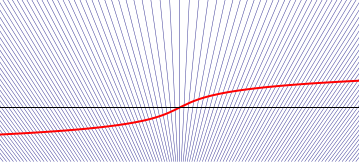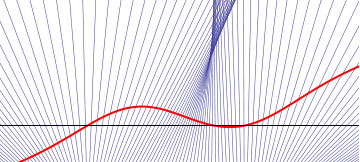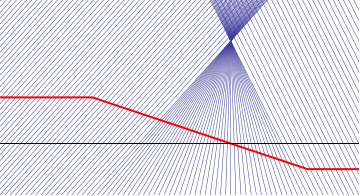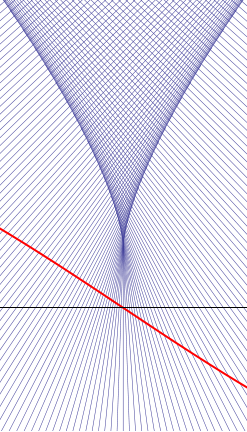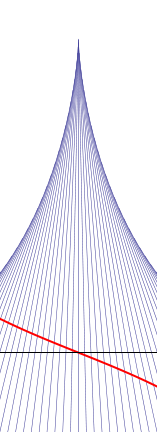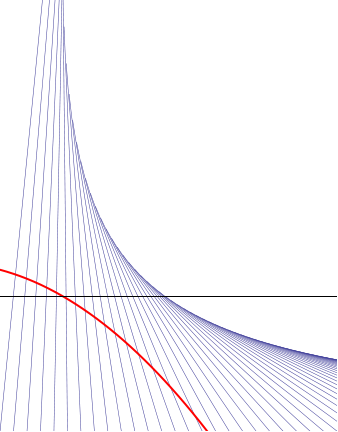Riemann-, Generalized-Riemann-, and Darboux-Stieltjes integrals
(The following is somewhat rough and may have typos.)
Let us begin by setting the notations and recalling what happens without the Stieltjes part.
Defn (Partition)
Let be a closed interval. A partition
is a finite collection of closed subintervals
such that
is finite;
covers
, i.e.
;
is pairwise almost disjoint, i.e. for
distinct elements of
, their intersection contains at most one point.
We write for the set of all partitions of
.
Defn (Refinement)
Fix a closed interval, and
two partitions. We say that
refines
or that
if for every
there exists
such that
.
Defn (Selection)
Given a closed interval and
a partition, a selection
is a mapping that satisfies
.
Defn (Size)
Given a closed interval and
a partition, the size of
is defined as
, where
is the length of the closed interval
.
Remark In the above we have defined two different preorders on the set of all partitions. One is induced by the size: we say that
if
. The other is given by the refinement
. Note that neither are partial orders. (But that the preorder given by refinement can be made into a partial order if we disallow zero-length degenerate closed intervals.) Note also that if
we must have
.
Now we can define the notions of integrability.
Defn (Integrability)
Let be a closed, bounded interval and
be a bounded function. We say that
is integrable with integral
in the sense of
- Riemann if for every
there exists
such that for every
and every selection
we have
- Generalised-Riemann if for every
there exists
such that for every
and every selection
we have
- Darboux if
From the definition it is clear that “Riemann integrable” implies “Generalised-Riemann integrable”. Furthermore, we have clearly that for a fixed
and that if we have
so “Darboux integrable” also implies “Generalised-Riemann integrable”. A little bit more work shows that “Generalised-Riemann integrable” also implies “Darboux integrable” (if the suprema and infima are obtained on the intervals , this would follow immediately; using the boundedness of the intervals we can find
such that the Riemann sum approximates the upper or lower Darboux sums arbitrarily well.
The interesting part is the following
Theorem
Darboux integrable functions are Riemann integrable. Thus all three notions are equivalent.
Proof. Let be partitions. Let
, and let
be the number of non-degenerate subintervals in
. We have the following estimate
The estimate follows by noting that “most” of the will be proper subsets of
, and there can be at most
of the
that straddles between two different non-degenerate sub-intervals of
. To prove the theorem it suffices to choose first a
such that the upper and lower Darboux sums well-approximates the integral. Then we can conclude for all
with
sufficiently small the Riemann sum is almost controlled by the
-Darboux sums. Q.E.D.
Now that we have recalled the case of the usual integrability. Let us consider the case of the Stieltjes integrals: instead of integrating against , we integrate against
, where
is roughly speaking a “cumulative distribution function”: we assume that
is a bounded monotonically increasing function.
The definition of the integrals are largely the same, except that at every step we replace the width of the interval by the diameter of
, i.e.
. The arguments above immediately also imply that
- “Riemann-Stieltjes integrable” implies “Generalised-Riemann-Stieltjes integrable”
- “Darboux-Stieltjes integrable” implies “Generalised-Riemann-Stieltjes integrable”
- “Generalised-Riemann-Stieltjes integrable” implies “Darboux-Stientjes integrable”
However, Darboux-Stieltjes integrable functions need not be Riemann-Stieltjes integrable. The possibility of failure can be seen in the proof of the theorem above, where we used the fact that is allow to be made arbitrarily small. The same estimate, in the case of the Stieltjes version of the integrals, has
replaced by
, which for arbitrary partitions need to shrink to zero. To have a concrete illustration, we give the following:
Example
Let . Let
if
and
otherwise. Let
if
and
otherwise. Let
be the partition
. We have that
while
so we have that in particular the pair is Darboux-Stieltjes integrable with integral 0. However, let
be any odd integer, consider the partition
of
into
equal portions. Depending on the choice of the selection
, we see that the sum can take the values
which shows that the Riemann-Stieltjes condition can never be satisfied.
The example above where both and
are discontinuous at the same point is essentially sharp. A easy modification of the previous theorem shows that
Prop
If at least one of is continuous, then Darboux-Stieltjes integrability is equivalent to Riemann-Stieltjes integrability.
Remark The nonexistence of Riemann-Stieltjes integral when and
has shared discontinuity points is similar in spirit to the idea in distribution theory where whether the product of two distributions is well-defined (as a distribution) depends on their wave-front sets.
